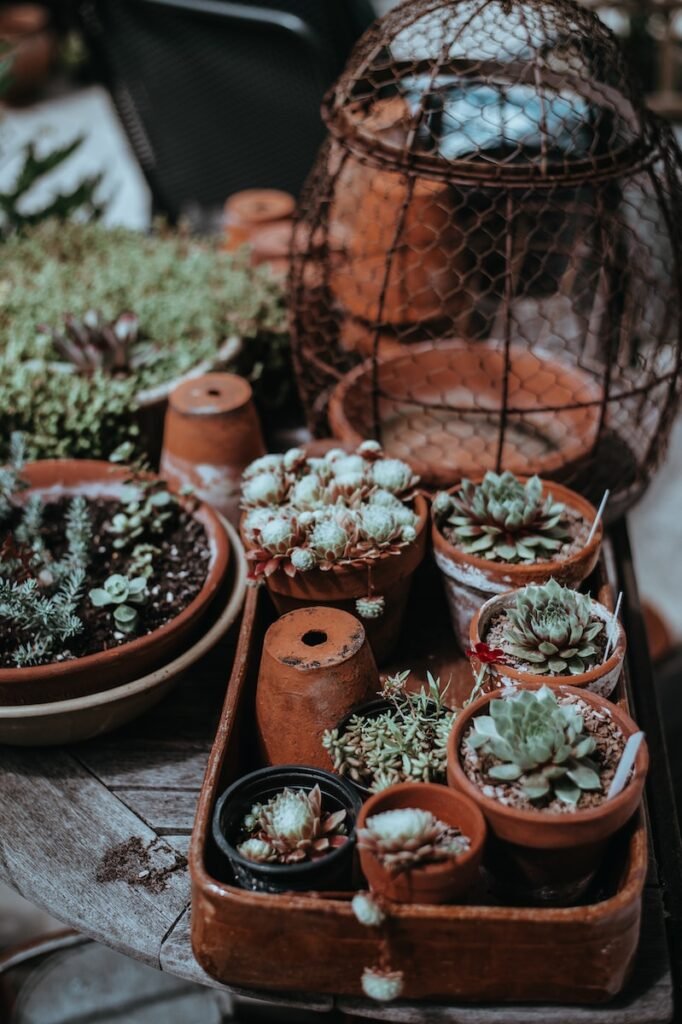“Mastering Succulent Care: A Quick Guide”

Embarking on a journey to care for succulents can be as rewarding as it is challenging. These resilient yet delicate plants require a specific set of conditions to thrive, blending art and science in their upkeep. In “Mastering Succulent Care: A Comprehensive Guide,” we delve into the intricate world of succulent maintenance, unraveling the secrets to a thriving succulent garden. From understanding the importance of light, water, and soil to mastering the subtleties of temperature and pest management, this guide offers a detailed roadmap for both beginners and seasoned enthusiasts. By adhering to these meticulously crafted steps, you will be equipped to nurture your succulents, ensuring their health and vibrancy.
- Light Requirements: Succulents thrive in environments that replicate their natural habitat, which is typically arid and receives strong light. However, too much direct sunlight can cause sunburn, where leaves may start to look bleached out or develop brown spots. It’s essential to gradually acclimate succulents to full sunlight exposure, especially if they were previously indoors or in the shade.
- Watering Technique: The “soak and dry” method is best for succulents. This means watering the soil thoroughly, allowing it to soak the water up from the bottom of the root system, and then letting it dry out completely before the next watering. This cycle encourages the roots to grow strong and healthy. Overwatering is one of the most common mistakes and can lead to root rot.
- Soil Composition: Good succulent care starts with the right type of soil. It should be a mix that mimics the native soils they grow in, which typically don’t hold moisture. Ingredients like perlite, pumice, or coarse sand mixed with potting soil can provide the drainage these plants need.
- Appropriate Potting: The pot size and material can affect how well the soil dries out. Too large of a pot will hold excess moisture, so it’s best to choose a pot that’s just slightly larger than the succulent’s root ball. Terracotta pots are excellent for succulents because they’re porous and allow the soil to dry more evenly.
- Temperature Considerations: While succulents are adaptable to many temperature ranges, they generally don’t like the cold and can be damaged by frost. If you live in an area with cold winters, it’s essential to bring outdoor succulents inside or provide them with frost protection.
- Fertilization Practices: During the growing season, which is typically spring and summer for succulents, a diluted half-strength fertilizer can support their growth. However, during the dormant period in the winter months, fertilizing should be reduced or stopped entirely.
- Propagation Techniques: Many succulents propagate easily through leaf cuttings or offsets. It’s a cost-effective way to expand your collection. Leaves should be allowed to callous over for a few days before being placed on top of the soil to root.
- Pruning and Maintenance: Removing dead or dying leaves not only improves the appearance of your succulent but also prevents rot and disease. For taller varieties, pruning can help maintain a more compact shape and encourage more growth at the base.
- Humidity Control: Succulents prefer dry air, which can be a challenge in humid climates. In such environments, it’s crucial to ensure that the soil dries quickly and that there’s plenty of airflow around the plants.
- Pest Management: Common pests like aphids, mealybugs, and spider mites can be controlled with insecticidal soap or neem oil. Regular inspections can catch infestations early before they become a significant problem.
- Seasonal Adjustments: As the seasons change, so should your care for succulents. Less water is needed in the winter, and some may require cooler temperatures to initiate a rest period, which is essential for flowering the following season.
- Air Circulation: Good air circulation is vital for keeping the succulents’ leaves dry and for preventing the spread of pests. A gentle fan or an open window can help, especially in areas of high humidity.
- Repotting Schedule: Repotting provides fresh nutrients and prevents the compaction of the soil. It also gives you a chance to check the health of the roots and treat any issues before they worsen.
- Sunburn Awareness: Prevention is the best measure against sunburn. Gradually increase the amount of sunlight the succulent receives over several weeks. Once damage has occurred, it can’t be reversed, but it can serve as a lesson in proper sun exposure.
- Grouping Succulents: When creating a succulent arrangement, it’s important to pair plants with similar needs together. This not only creates a harmonious visual but also ensures that one plant’s requirements don’t detrimentally affect another.
In conclusion, the journey of succulent care is a meticulous yet deeply fulfilling endeavor. By adhering to the guidelines outlined in this quick guide, from the nuances of light exposure and watering techniques to the intricacies of soil composition and pest management, you can cultivate a thriving succulent garden. Remember, each succulent is a unique individual, requiring a tailored approach to care. Embrace the process of learning and adjusting as you go, and take pride in the growth and health of your succulent collection. With patience and attention to detail, your succulents will not only survive but flourish, becoming a testament to the rewards of diligent plant care.

